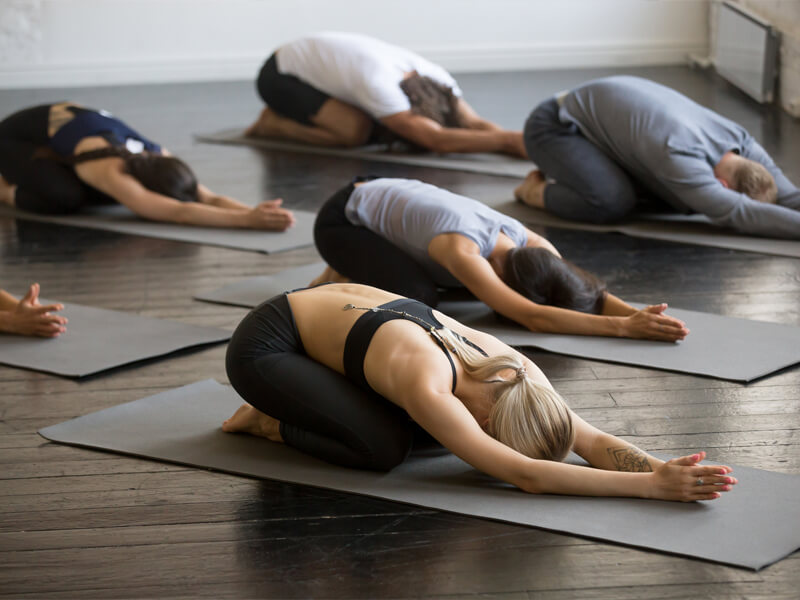The heat is on: How Bikram yoga can fire up your health routine
Intense, invigorating and both physically and mentally tough, millions have fallen in love with the sweaty practice of Bikram yoga. But what is it, and why does it have to be so damn hot?
Developed in the 1970s, Bikram is a prescriptive style of yoga comprising a sequence of 26 postures and breathing exercises.
It is performed over 90 minutes in a room pre-heated to 41C and 40 per cent humidity, and follows a uniform structure each time, explains Bikram Yoga director Marty Williamson.
Marty says the repetition helps minimise interruptions of thought and allows better connection of mind and body as you work through the movements.
“It helps the meditative practice and you can allow your body to just do what comes naturally,” he says.
What’s the difference between Bikram and hot yoga?
While Bikram yoga follows a set temperature and routine, hot yoga practice can vary between studios.
“Bikram is going to be the same if you practise at my school in Darlinghurst in Sydney, or in Melbourne, or any school around the world,” Marty says.
Hot yoga can be any style of yoga (often vinyasa) performed in a heated room, with poses and temperatures differing from studio to studio.
“(Hot yoga) could be for cardio or strength, or it could be focused on a particular part of the body or mind,” Marty says.
- Well grounded: A rookie’s guide to the 7 basic chakras
How can Bikram benefit a wellness routine?
A review published in the International Journal of Yoga found yogic practices carry myriad benefits, aiding everything from cardiovascular function to stress relief, sleep issues and muscular strength.
“Studies have shown yoga participants benefit from burning calories, increased balance, improved lower body strength and enhanced upper and lower body range of motion (flexibility),” says exercise physiologist and yoga instructor Caitlin Hunt.
There is evidence to suggest Bikram in may also improve glucose tolerance, bone mineral density, blood lipid profile, arterial stiffness, mindfulness and perceived stress.
A US study found a 90-minute Bikram yoga class could burn a similar amount of energy as light to moderate intensity exercise.
- Strong and free: 5 ways yoga can benefit your running
Why does Bikram require such intense heat?
Caitlin says the hot room, said to replicate the stifling heat in India, can increase the intensity of the exercise.
“The heated room will increase your heart rate and give you a higher metabolic response than the same postures and exercise in a non-heated room,” she says.
Marty adds: “The heat helps to warm the muscles, the skin, the joints, the ligaments and tendons, all of which aids in the yoga process.”
The intense heat also raises the stakes when it comes to mind-body connection.
“If you are looking for a mentally tough yoga class that will push you to your physical and mental limits, this may be the ideal workout for you,” Caitlin says.
What to expect at a Bikram yoga class
Firstly, be prepared to sweat.
“Sweating is natural cooling response from the stress of heat during exercise,” Caitlin says.
“To balance this fluid loss, drink plenty of water on the day you are planning to attend, then rehydrate after the class.
“Dress in cool active wear to allow your body to lose heat.”
- Get appy: The best ways to practice yoga at home
When is Bikram yoga not recommended?
Caitlin and Marty say exercising at high temperatures is not suggested for pregnant women.
Anyone with health issues such as heart or artery irregularities, a history of dizziness, or heat intolerance should seek medical advice and discuss their condition with the studio owner or teacher.
“Understand the risks of exercising at extreme temperatures and as always, if you are unsure, check with your GP,” says Caitlin.
Written by Claire Burke.





